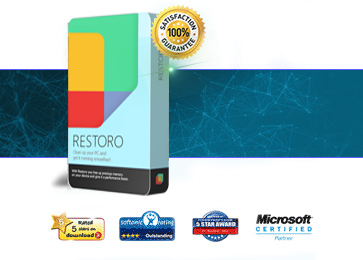
What is Scarab Scarab DiskDoctor ransomware? And how does it execute its attack?
Scarab Scarab DiskDoctor ransomware is a file-encrypting threat and is an old variant of Scarab ransomware that’s making a comeback in October 2018. Instead of the .DiskDoctor extension, it now uses the .DD extension in marking its encrypted files. This newer variation of DiskDoctor ransomware still uses the same sequence in executing its attack.
Once it infects a computer, it drops a payload file in the system and runs it which will connect the computer to a remote server. Afterwards, it downloads some malicious components from this server and creates new ones. It then employs an information gathering module used to obtain data about the computer and its user. The data obtained, along with the malicious components of the crypto-malware are then used for the stealth protection module. It then proceeds to modify some entries in the Windows Registry, allowing it to run automatically every time users turn on their PCs. Once the system changes are completed, it begins to search for files with the following extensions:
.aapp, .bat, .bin, .cab, .CAT, .cer, .CHS, .CHT, .css, .CZE, .DAN, .DEU, .dll, .doc, .docx, .ESP, .EUQ, .exe, .fdb, .FRA, .gif, .HRV, .htm, .html, .HUN, .ini, .ITA, .jpg, .JPN, .js, .KOR, .kt1, .NLD, .NOR, .pak, .pdf, .png, .POL, .pst, .PTB, .RUM, .RUS, .SKY, .SLV, .SYO, .sys, .SVE, .tmp, .TUR, .txt, .UKR, .wmv, .zip
Once it finds its targeted files, Scarab DiskDoctor ransomware starts the encryption process using a sophisticated encryption algorithm. Following file encryption, it appends the .DD extension to each one of the affected files and releases a ransom note named “HOW TO RETURN FILES.txt” which contains the following content:
“Warning all your files are encrypted !!!
To receive the decoder, you must send an email to
the email address with your personal ID:
[email protected]
In response you will receive further instructions.
ATTENTION !!!
* Do not attempt to uninstall the program or run
antivirus software.
* Attempts to self-decrypt files will result in the
loss of your data.
* Decoders of other users are incompatible with your
data, as each user has a unique encryption key.
Your personal identifier:
================================================
6902000000000000…
================================================”
How does Scarab Scarab DiskDoctor ransomware circulate over the web?
Scarab DiskDoctor ransomware, just like other Scarab variants, utilizes malicious spam emails to infect users. These spam emails often contain obfuscated attachment or corrupted links to launch DiskDoctor ransomware. Thus, opening files from suspicious-looking senders is certainly not advised.
Eliminate Scarab DiskDoctor ransomware from your system by following the removal guide below as well as the advanced steps that follows.
Step 1: Press the Ctrl + Alt + Delete keys at the same time to open a menu and then expand the Shut down options which is right next to the power button.
Step 2: After that, tap and hold the Shift key and then click on Restart.
Step 3: And in the Troubleshoot menu that opens, click on the Advanced options and then go to the Startup settings.
Step 4: Click on Restart and tap F4 to select Safe Mode or tap F5 to select Safe Mode with Networking.
Step 5: After your PC has successfully rebooted, tap Ctrl + Shift + Esc to open the Task Manager.

Step 6: Go to the Processes tab and look for any suspicious-looking processes that could be related to Scarab DiskDoctor ransomware and then end their processes.

Step 7: Exit the Task Manager and open the Programs and Features section under Control Panel by pressing the Windows key + R, then type in appwiz.cpl and then click OK or press Enter.
Step 8: Look for any suspicious-looking programs that could be related to Scarab DiskDoctor ransomware and then uninstall it.

Step 9: Close Control Panel and tap Win + E keys to open File Explorer.
Step 10: Navigate to the following locations and look for the malicious components created by Scarab DiskDoctor ransomware like HOW TO RETURN FILES.txt and make sure to delete them all.
- %APPDATA%
- %TEMP%
- %APPDATA%\Microsoft\Windows\Start Menu\Programs\Startup\
- %USERPROFILE%\Downloads
- %USERPROFILE%\Desktop
Step 11: Close the File Explorer.
Before you proceed to the next steps below, make sure that you are tech savvy enough to the point where you know exactly how to use and navigate your computer’s Registry. Keep in mind that any changes you make will highly impact your computer. To save you the trouble and time, you can just use [product-name] this system tool is proven to be safe and excellent enough that hackers won’t be able to hack into it. But if you can manage Windows Registry well, then by all means go on to the next steps.
Step 12: Tap Win + R to open Run and then type in regedit in the field and tap enter to pull up Windows Registry.

Step 13: Navigate to the listed paths below and look for the registry keys and sub-keys created by Scarab DiskDoctor ransomware.
- HKEY_CURRENT_USER\Control Panel\Desktop\
- HKEY_USERS\.DEFAULT\Control Panel\Desktop\
- HKEY_LOCAL_MACHINE\Software\Microsoft\Windows\CurrentVersion\Run
- HKEY_CURRENT_USER\Software\Microsoft\Windows\CurrentVersion\Run
- HKEY_LOCAL_MACHINE\Software\Microsoft\Windows\CurrentVersion\RunOnce
- HKEY_CURRENT_USER\Software\Microsoft\Windows\CurrentVersion\RunOnce
Step 14: Delete the registry keys and sub-keys created by Scarab DiskDoctor ransomware.
Step 15: Close the Registry Editor and empty your Recycle Bin.
Try to recover your encrypted files using the Shadow Volume copies
Restoring your encrypted files using Windows’ Previous Versions feature will only be effective if Scarab DiskDoctor ransomware hasn’t deleted the shadow copies of your files. But still, this is one of the best and free methods there is, so it’s definitely worth a shot.
To restore the encrypted file, right-click on it and select Properties, a new window will pop-up, then proceed to Previous Versions. It will load the file’s previous version before it was modified. After it loads, select any of the previous versions displayed on the list like the one in the illustration below. And then click the Restore button.

To ensure the removal of Scarab DiskDoctor ransomware from your system including the malicious components it has created on your system, follow the advanced steps below.
Perform a full system scan using [product-code]. To do so, follow these steps:
- Turn on your computer. If it’s already on, you have to reboot it.
- After that, the BIOS screen will be displayed, but if Windows pops up instead, reboot your computer and try again. Once you’re on the BIOS screen, repeat pressing F8, by doing so the Advanced Option shows up.

- To navigate the Advanced Option use the arrow keys and select Safe Mode with Networking then hit
- Windows will now load the Safe Mode with Networking.
- Press and hold both R key and Windows key.

- If done correctly, the Windows Run Box will show up.
- Type in the URL address, [product-url] in the Run dialog box and then tap Enter or click OK.
- After that, it will download the program. Wait for the download to finish and then open the launcher to install the program.
- Once the installation process is completed, run [product-code] to perform a full system scan.

- After the scan is completed click the “Fix, Clean & Optimize Now” button.












